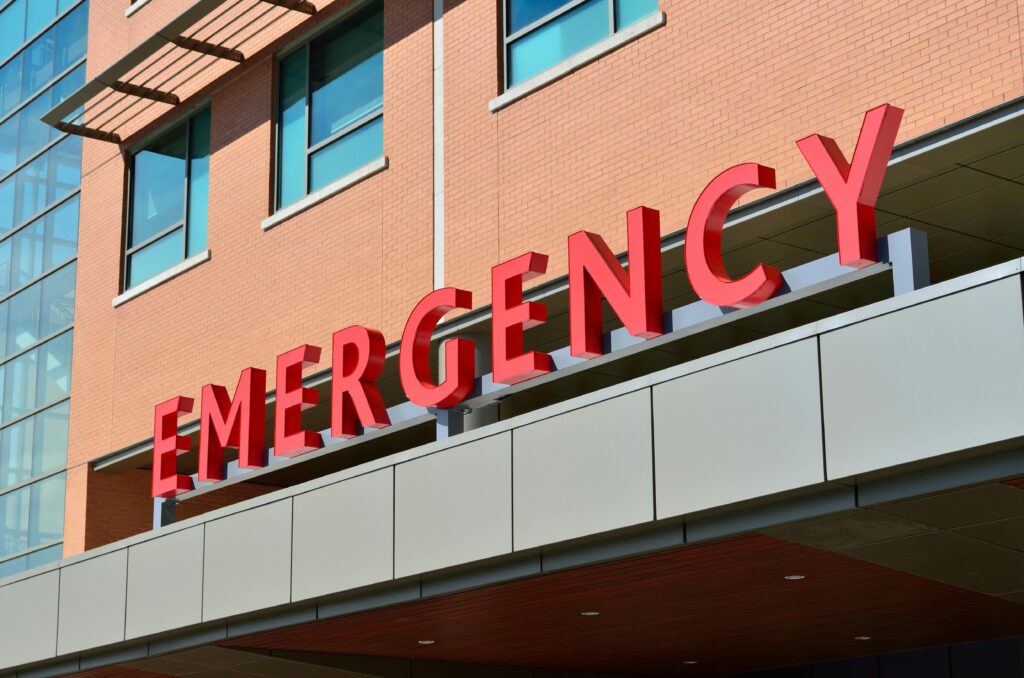
If you or a loved one are experiencing a medical emergency, time is of the essence. Knowing where to go for urgent medical care can greatly impact the outcome of the situation. In this guide, we’ll discuss the differences between an Emergency Room (ER) and Urgent Care facility, so you can make an informed decision on where to seek treatment when faced with a medical urgency. Now let’s dive in and explore these options together!
Understanding your Options: ER Versus Urgent Care
In times of sudden illness or injury, it can be difficult to determine whether the situation warrants a trip to the ER or if it can be treated at an Urgent Care facility. While both options provide medical care, there are distinct differences between the two that can help you make a decision.
Emergency Rooms (ER)
Emergency Rooms are equipped to handle life-threatening medical emergencies. This includes severe injuries, heart attacks, strokes, and other serious conditions that require immediate attention. ERs are open 24/7 and have a team of specialized doctors and nurses on staff to handle critical situations.
If you or someone you know is experiencing any of the following symptoms, it’s best to go directly to the ER:
Difficulty breathing
Chest pain
Uncontrollable bleeding
Severe head injury
Loss of consciousness
In these situations, every second counts and it’s important to seek medical attention at the nearest ER.
When you arrive at the ER, you can expect to be triaged by a nurse who will assess your condition and prioritize treatment based on the severity of your case. This means that patients with life-threatening emergencies will receive immediate attention while those with less severe issues may have to wait longer for treatment. Once seen by a doctor, they will determine the best course of action which may include diagnostic tests, medication, or surgery depending on the situation.
Urgent Care
Care facilities provide treatment for non-life-threatening medical issues that still require prompt care, including West Ocean City Injury & Illness Center. These facilities are typically open during extended hours, including weekends and holidays, making them a convenient option for minor injuries or illnesses that cannot wait until your primary care physician’s office is open.
Some common reasons people visit Urgent Care include:
Sprains and strains
Minor burns
Allergies
Ear pain and infections
Flu or cold symptoms
While urgent care may not have the same level of specialized equipment as an ER, they do offer on-site x-rays and labs for diagnosis and treatment. They also have a team of experienced medical professionals who can provide quality care for non-emergency situations.
When you arrive at an Urgent Care facility, you can expect to be seen by a healthcare provider within a short amount of time. Unlike the ER, there is usually no triage process and patients are seen on a first-come, first-served basis. You will also likely have to fill out some paperwork and provide insurance information before being seen. Once evaluated by a medical professional, they may prescribe medication or refer you to another specialist if necessary. Note that urgent care centers are not equipped to handle life-threatening emergencies, so it’s crucial to assess your symptoms and seek help accordingly.
Making the Decision
In most cases, it’s better to err on the side of caution and seek treatment at the ER if you’re unsure about the severity of your symptoms. However, if you believe your condition is not life-threatening and can wait for treatment during regular business hours, an Urgent Care facility may be a more appropriate option.
Be sure to consider your insurance coverage when making this decision. Emergency Room visits are typically more expensive than urgent care visits, so if cost is a concern, it may be worth calling your insurance provider for guidance.
What Not to Do at an Urgent Care or ER
Regardless of where you seek medical treatment, remember that these facilities are for urgent and emergency situations only. This means that minor issues such as a common cold or a routine check-up should be addressed by your primary care physician.
Be sure to avoid abusing these facilities by using them for non-medical purposes, such as obtaining prescription medication or seeking a doctor’s note for work. Doing so not only takes away resources from those who truly need urgent care, but it can also result in legal consequences.
How to Help Children Who Need Care
Accidents and sudden illnesses can be especially scary for children. As a parent or caregiver, it’s important to remain calm and reassure your child that they will receive the necessary care. If possible, explain the situation to them in an age-appropriate manner and answer any questions they may have. For young children, it may also be helpful to bring along a comfort item like a favorite stuffed animal or blanket to provide some familiarity and comfort during their visit.
No matter where you decide to seek treatment, the most important thing is to prioritize your health and well-being. If you or someone else is experiencing a medical emergency, don’t hesitate to call 911 for immediate assistance. For non-life-threatening situations, understanding the differences between an ER and Urgent Care can help you make the best decision for yourself or your loved ones. Remember, when in doubt, it’s always better to seek medical attention sooner rather than later. Stay safe and take care!


